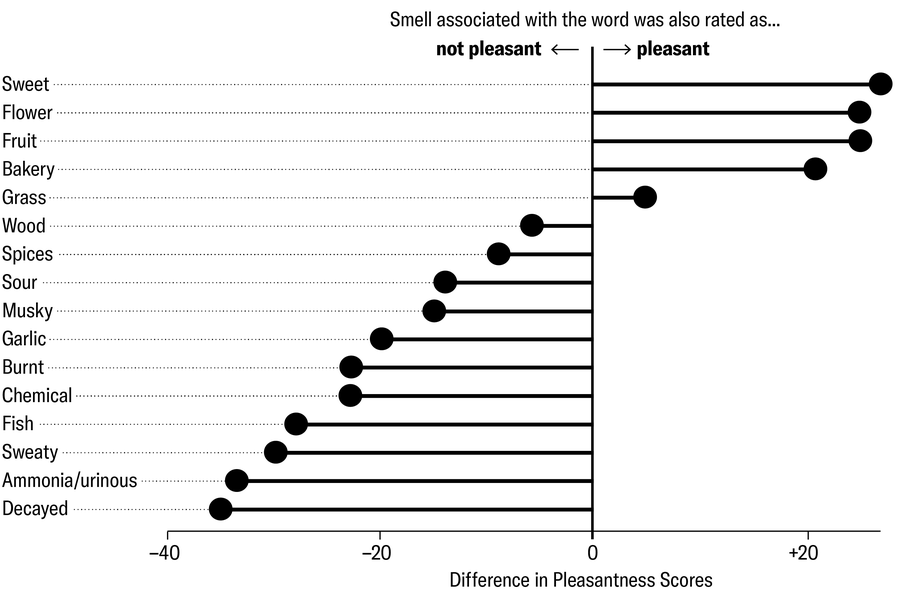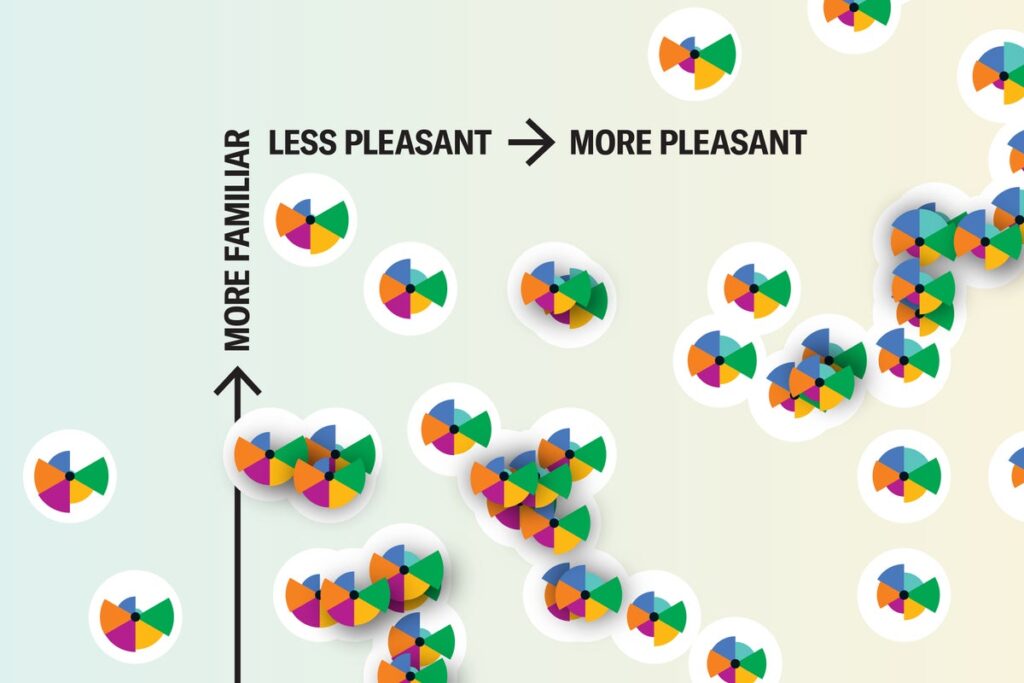The sense of smell, it turns out, is highly individual—a scent that is enticingly floral to one person may be off-putting and chemical to another. Researchers in Germany -recently asked 1,227 participants to describe and rate 73 odors and found their answers to be strikingly variable. “It depends on what people have associated with the odor,” says psychologist Antonie Louise Bierling of Friedrich Schiller University Jena, who led the study. “In my opinion, it would have been really astonishing if the same odor smelled pleasant to everyone. Why should it?”
The researchers did identify some trends. More familiar scents seem to smell more pleasant, for example, and odors from complex molecules seem to have greater appeal than those of simple compounds.
Scientists hope to use the data to help develop “digital olfaction”—artificial noses that can sense scents as well as or even better than humans. Such devices could be helpful for disease detection or in “smart home” applications: a toaster, for instance, that can tell when toast is done by how burned it smells or refrigerators that can identify putrid decay.
On supporting science journalism
If you’re enjoying this article, consider supporting our award-winning journalism by subscribing. By purchasing a subscription you are helping to ensure the future of impactful stories about the discoveries and ideas shaping our world today.
Miriam Quick and Jen Christiansen; Source: “A Dataset of Laymen Olfactory Perception for 74 Mono-Molecular Odors,” by Antonie Louise Bierling et al., in Scientific Data, Vol. 12; February 2025 (data)
HOW WE DESCRIBE SMELLS, GOOD AND BAD
Researchers asked people to respond with “yes” or “no” to whether each smell matched 16 descriptive terms, including “sweet” and “musky.” By comparing these answers with the sliding-scale pleasantness scores the same molecules received, we can see which words were most predictive of pleasant—and unpleasant—smells.
The dots in the graph indicate the difference in pleasantness scores for scents associated with each word. For example, the median pleasantness score for all molecules that the respondents considered “sweet” was 61, and the median pleasantness score for all molecules that were not marked as “sweet” was 34. The difference in scores was +27, making “sweet” the word most frequently associated with scents perceived as pleasant. “Decayed,” with a difference in scores of –35, was the descriptor least associated with pleasant smells.

Miriam Quick and Jen Christiansen; Source: “A Dataset of Laymen Olfactory Perception for 74 Mono-Molecular Odors,” by Antonie Louise Bierling et al., in Scientific Data, Vol. 12; February 2025 (data)
THE SWEET SMELL OF COMPLEXITY
More complex molecules tend to be ranked as more pleasant. Molecular complexity is a rough estimate of how intricate a compound’s structure is. It runs on a scale from 0 to thousands—in this dataset, from 10.8 (isopropyl alcohol) to 366 (tonalide). Here each dot represents one of 73 molecules. We grouped molecular complexity into three categories: high, medium and low. Vertical bars mark median pleasantness scores per category.

Miriam Quick and Jen Christiansen; Source: “A Dataset of Laymen Olfactory Perception for 74 Mono-Molecular Odors,” by Antonie Louise Bierling et al., in Scientific Data, Vol. 12; February 2025 (data)

